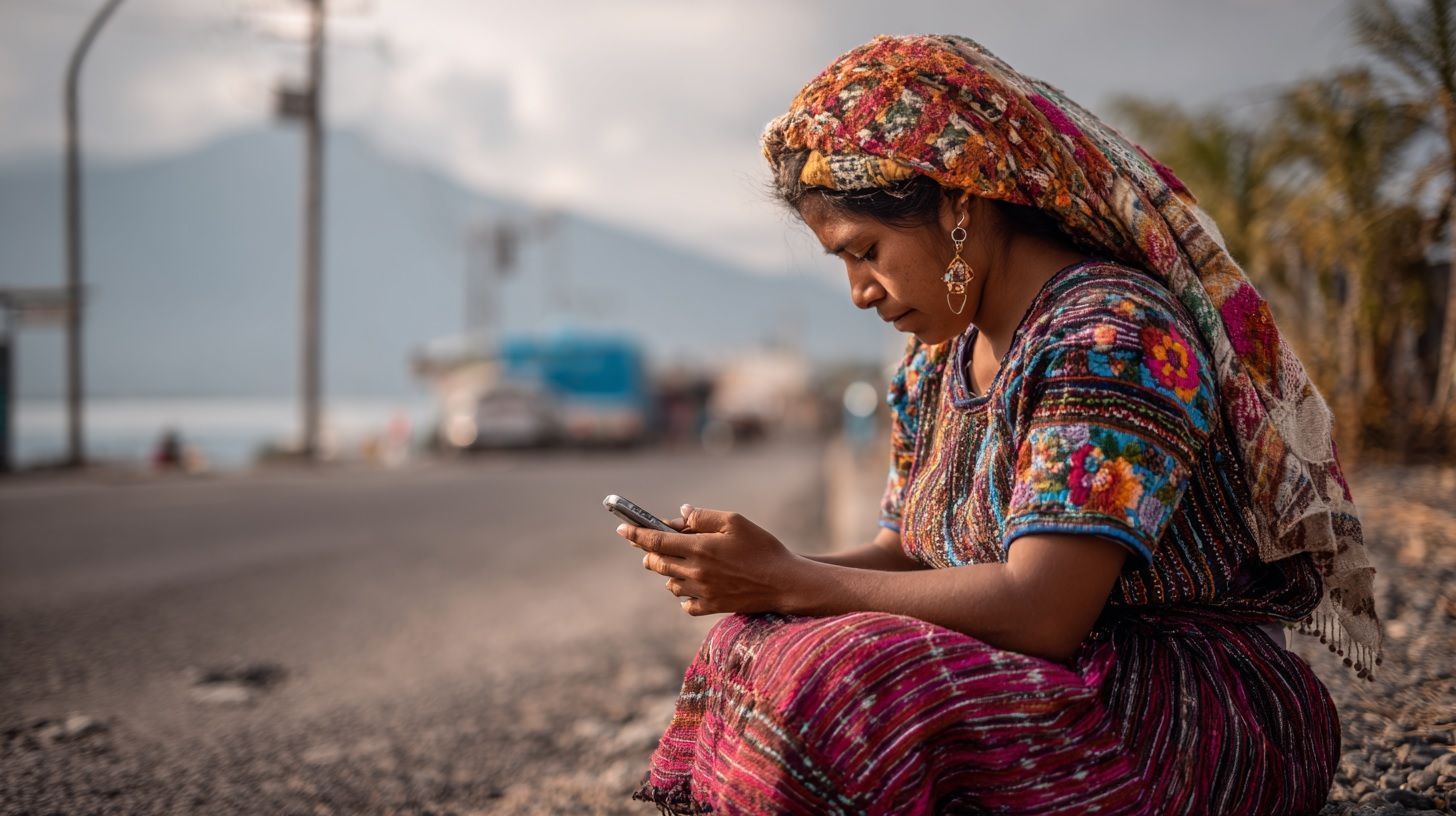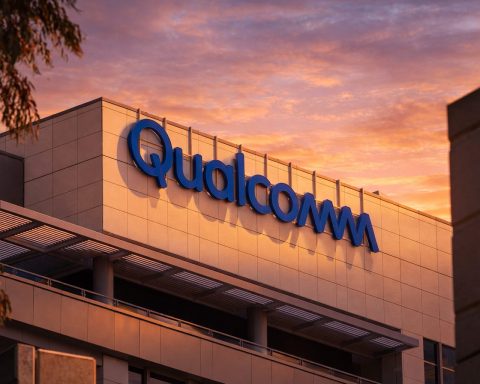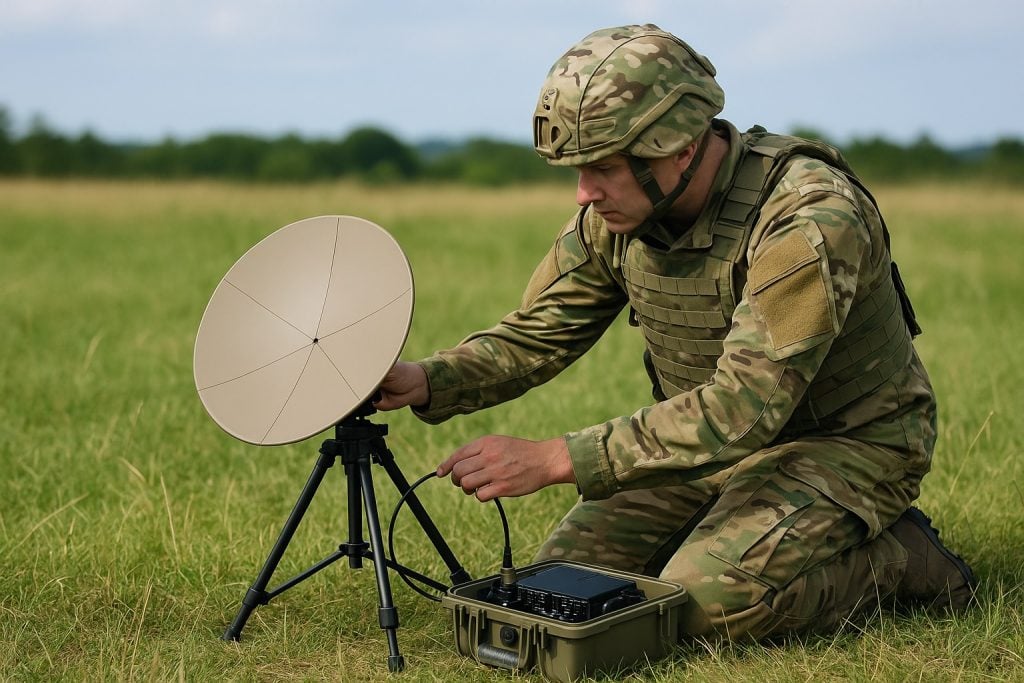- 4G LTE coverage is extensive, reaching about 91% of the population in 2024, while 3G coverage reaches about 95%.
- In 2023, SIT held spectrum auctions that raised about $176 million in total: 126 MHz in the 2.5 GHz band brought in about $49 million (with Tigo $32 million and Claro $17 million) and a later 700 MHz tender raised about $127 million.
- Starlink officially launched in Guatemala in June 2024 with the Starlink Mini kit priced around Q1,600 ($200) and monthly plans of Q510–560 ($65–72), delivering speeds of 100–200 Mbps with latency of 20–50 ms.
- As of early 2024, about 10.99 million Guatemalans were internet users (roughly 60% of the population), with penetration rising to about 60.8% by early 2025.
- Rural areas remain underserved despite mobile improvement, with the 2018 Sacatepéquez survey showing only about 10% of households had internet and rural regions housing roughly 46% of Guatemala’s 18.5 million people.
- The market is a duopoly of Tigo (Millicom) and Claro (América Móvil), which together dominate mobile and fixed internet services.
- Tigo and Claro operate nationwide GSM/3G/4G networks and have tested 5G, with 4G coverage spanning about 91% of the population in 2024.
- Public Wi-Fi initiatives include Wayfree’s free city hotspots and government programs offering Internet para Todos zones in parks or schools.
- Legacy satellite providers HughesNet and Viasat offered 10–25 Mbps speeds with 600–800 ms latency and strict data caps, used mainly by NGOs and community centers.
- In 2023–2024, the government funded Digital Community Centers via USTDA support, starting with 10 centers and aiming for 3,000 sites, solar-powered and women-led to provide internet and digital training.
Guatemala’s internet landscape is a mix of rapid progress and persistent gaps. Over the past decade, millions of Guatemalans have come online, yet connectivity remains uneven between bustling cities and remote rural villages. This report provides a comprehensive overview of internet access in Guatemala – from the national infrastructure of fiber-optic cables and mobile networks, to urban Wi-Fi initiatives and the satellite links now reaching isolated communities. We examine coverage and penetration rates in urban vs. rural areas, identify key service providers and technologies, evaluate affordability and quality, review government policies and digital inclusion programs, and consider how satellite internet is helping bridge the digital divide. Comparisons with neighboring Central American countries and recent developments (such as spectrum auctions and upcoming 5G plans) offer context for Guatemala’s connectivity journey and its future outlook.
1. National Internet Infrastructure Overview
Guatemala’s telecommunications infrastructure combines fiber-optic backbones, microwave relays, and extensive mobile networks. The country is connected internationally via submarine fiber cables (the ARCOS-1 and SAm-1 systems) and terrestrial links through Mexico and Central America [1] [2]. Domestically, private operators have built fiber networks to interconnect major cities and towns, although the fiber footprint in rural areas is limited. Fixed broadband (delivered via DSL, cable, or fiber-to-the-home) exists primarily in urban centers. For example, the incumbent Telgua (now part of Claro) provides DSL and some fiber, while Tigo (Millicom) offers cable broadband and is expanding fiber in cities. However, most rural communities have little to no fixed broadband infrastructure, relying instead on wireless solutions.
Mobile networks form the backbone of Guatemala’s internet access. The country has a modern cellular network centered in Guatemala City and other population centers [3]. After the liberalization of telecom markets in the late 1990s, mobile penetration surged, jumping from only ~660,000 mobile lines in 2000 to over 20 million by 2012 [4]. Today, two major operators dominate (Tigo and Claro), both operating nationwide GSM/3G/4G networks. 4G LTE coverage is extensive – reaching about 91% of the population in 2024 [5] – while legacy 3G covers even more (95% population coverage) [6]. This means most Guatemalans live in range of at least a basic mobile data signal. That said, coverage can be spotty in the mountainous highlands and jungles, where building cell towers is challenging. In such areas, some communities still depend on 2G voice/SMS or have no mobile signal at all.
Guatemala is only beginning its transition to 5G. The telecom regulator (SIT) held spectrum auctions in 2023 to pave the way for 5G and improve 4G capacity. In June 2023, 126 MHz in the 2.5 GHz band was auctioned, raising about $49 million; notably, 75% of these proceeds are earmarked for initiatives to improve connectivity in underserved areas [7]. Tigo and Claro each acquired portions of this spectrum (Tigo investing $32 million, Claro $17 million) to bolster their networks. A subsequent tender for 700 MHz spectrum (a lower band ideal for wide coverage) raised an even larger sum (~$127 million) later in 2023, indicating strong operator interest in expanding coverage and introducing 5G services. These developments suggest that Guatemala’s core infrastructure is poised for upgrades, with operators planning 5G rollouts (at least in urban zones) once sufficient spectrum is secured. In the meantime, 4G remains the workhorse technology bringing internet to most Guatemalans.
2. Coverage and Penetration: Urban vs. Rural
Despite the extensive infrastructure, internet access in Guatemala is far from universal. As of early 2024, roughly 10.99 million Guatemalans were internet users – about 60% of the population [8] [9]. By the start of 2025, internet penetration had inched up to around 60.8% [10]. This represents remarkable growth from just a few years prior (for instance, only ~54% used the internet in 2022 [11]), but it also means nearly 4 in 10 citizens remain offline. Crucially, this national average hides a stark urban–rural divide. Internet penetration “drops drastically” in rural areas compared to cities [12].
In urban centers like Guatemala City and Quetzaltenango, most residents enjoy at least some internet access (via mobile data or home broadband). The department of Guatemala (which includes the capital) reported about 55% internet usage by 2018 [13], and that figure has likely grown significantly with the spread of smartphones. Urban areas benefit from better network coverage (including fiber and cable in some neighborhoods, and dense 4G cell site deployment). Public Wi-Fi hotspots are also common in cities – from cafes and malls to municipal programs offering free connectivity in plazas. In Guatemala City, for example, Wi-Fi has become “a staple” of connectivity in public spaces, akin to a basic utility, with many venues offering free access (just ask for the “clave”) [14]. This urban connectivity is reflected in everyday life: smartphones are ubiquitous and social media use (over 56% of the population) is high [15], indicating that a majority of city dwellers are online.
Rural Guatemala, by contrast, faces a significant digital divide. In many highland indigenous villages or lowland rural communities, internet access is scarce. A 2018 survey found that nationally only 29% of the population had used the internet in the previous three months, and usage in rural and indigenous regions was far below urban levels [16] [17]. For example, in the largely rural department of Sacatepéquez, only about 10% of households had internet access as of 2018 [18]. While these numbers have improved (thanks to growing mobile coverage), millions of rural Guatemalans still either lack service or cannot afford it. Mobile network reach in rural areas is improving – 4G signals now cover much of the population – but being within coverage is not the same as being connected. Many low-income rural families do not own an internet-capable device or they keep mobile data turned off to avoid costs. Consequently, the effective internet use in rural zones remains far lower than in cities, contributing to inequalities in education, information access, and economic opportunity.
Bridging this gap has become a priority. The government and private sector have launched programs to extend connectivity into rural areas (discussed further in Section 5). One creative approach has been the rollout of free or subsidized community Wi-Fi hotspots. A local startup called Wayfree has partnered with municipalities to install Wi-Fi routers on lampposts in town plazas and public areas across dozens of towns [19] [20]. By 2021, Wayfree had deployed around 350 hotspots in 70 municipalities, with plans to reach all 340 municipalities with 1,000 hotspots [21]. These hotspots offer a “freemium” service: anyone nearby can connect for 15-minute sessions, after viewing a few advertisements, and then reconnect again as needed [22]. For students in villages like Alotenango, such hotspots have been lifelines – allowing them to download school videos via WhatsApp or do online research in the town square when their families cannot afford cellular data [23] [24]. Initiatives like this, alongside expanding mobile networks, are slowly increasing rural internet uptake. Still, the rural population (about 46% of Guatemala’s 18.5 million people [25]) remains underserved, and the urban-rural digital gap persists as a major development challenge.
3. Key Internet Service Providers and Technologies
Guatemala’s internet access market is dominated by a duopoly of two large telecom companies: Tigo Guatemala (owned by Millicom International) and Claro Guatemala (owned by América Móvil). Together, these two control essentially 100% of the market for both mobile and fixed internet services [26] [27]. Smaller ISPs or telecoms have either been acquired or hold very niche shares. (Telefónica’s Movistar, once a third mobile operator, sold its Guatemala operations to Claro in 2019, consolidating the market into two players.) This dominance has given Tigo and Claro immense power – as one observer noted, “They control the market, and they control the prices.” [28]
Tigo is a leading provider offering mobile (voice/data) services, as well as fixed broadband (it inherited cable TV networks and provides cable modem internet and some fiber). Claro (which operates the legacy Telgua infrastructure) provides mobile services and is the main provider of DSL and telephone-line internet, along with growing fiber-to-the-home offerings in cities. Both companies have nationwide cellular coverage and compete closely in urban broadband markets. Their mobile networks support GSM/3G/4G; nearly 99% of all mobile connections in Guatemala are now “broadband” (3G/4G) capable [29], meaning that in theory almost all subscribers could access the internet via a mobile device. In practice, many users buy limited prepaid data packages rather than having always-on data. Prepaid plans dominate (over 90% of mobile internet users are on prepaid SIMs [30] [31]), reflecting the fact that much of the population lacks credit or stable income to commit to postpaid contracts. Users top-up their phones with small increments of data/credit, which influences how and when they access the internet (often just for essential messaging or specific tasks).
In terms of technologies offered: in cities, Tigo and Claro have rolled out 4G LTE widely, and both have been testing 5G (e.g. setting up demonstration centers in Guatemala City). Full 5G service awaits spectrum allocation, but limited 5G launches have been reported – though some experts say these are more like “enhanced 4G” in the interim [32]. For home broadband, Claro’s DSL can reach many towns via telephone lines, but speeds are modest. Tigo has been upgrading cable networks to provide higher speeds (tens of Mbps). A few niche providers and community cooperatives exist – for example, some regions have local wireless ISPs using point-to-point radio links to bring internet to remote farms or villages. However, these are not major players nationally.
It’s worth noting that public access points still play a role. Internet cafés (locally called “cyber-cafés”) once proliferated as a way for people without home service to get online; they are less common now due to mobile internet, but in small towns you can still find computer shops offering hourly internet access. Additionally, as mentioned, Guatemala has invested in free Wi-Fi zones – not only the Wayfree ad-supported hotspots, but also some government-led programs creating “Internet para Todos” (Internet for All) zones in parks or schools. The combined offerings of the duopoly and these supplementary networks determine what technologies people use: mobile data on smartphones is by far the most widespread means of internet access (accounting for over 90% of usage) [33] [34], while fixed broadband is a distant second (only about 9% use a fixed line at home) [35].
4. Affordability and Quality of Service
Internet service in Guatemala, while improving in reach, faces issues of affordability and quality that impact users’ experience. For many Guatemalans – especially low-income families – the cost of connectivity is a significant barrier. Mobile data prices, in absolute terms, are not the highest in the world, but they are high relative to local incomes. One analysis found the cheapest 1 GB mobile data package costs about $1.29 in Guatemala, which doesn’t sound bad until you compare it globally – it is almost 26 times more expensive than the cheapest 1 GB in India [36]. As a percentage of income, even a modest data plan can eat into a family’s budget in Guatemala, where poverty is widespread. The Alliance for Affordable Internet recommends 1 GB of mobile data cost no more than 2% of monthly income; in Guatemala, 1 GB was around 4.5% of the average monthly income as of a couple years ago, exceeding that threshold of affordability. The dominance of prepaid usage is partly a result of this: people buy just a few quetzales of data at a time to control spending, often waiting for promotions (e.g. “double balance” days) to maximize value.
On the fixed broadband side, affordability is also a concern. Broadband subscriptions (DSL, cable, etc.) are relatively expensive and thus mostly subscribed to by businesses and middle/upper-class urban households. A recent study noted that Guatemala’s broadband packages are among the most expensive in Latin America, one reason why home broadband uptake remains low [37] [38]. High costs are attributed to factors like limited competition (the duopoly), the difficulties of infrastructure deployment (e.g. running fiber or cable to dispersed rural homes), and market focus on mobile services. Indeed, many consumers find that a smartphone data plan, while not cheap, is still more attainable than paying for a monthly home internet bill. The government recognizes that cost is a barrier – in its digital inclusion discussions, reducing prices (perhaps via more competition or subsidies) is frequently mentioned as a goal.
When it comes to quality of service, there is a mixed picture. In urban areas with fiber or cable, users can get reasonably fast speeds (100 Mbps or more on the best plans), but these are a small minority. The average speeds experienced by Guatemalans are much lower. As of 2025, median fixed broadband download speed in Guatemala is around 60 Mbps [39], and median mobile data speed around 55 Mbps [40]. These figures actually indicate progress – they are on par with some regional peers – but many users, especially in rural zones, see far slower speeds. In rural 3G/4G zones, a user might only get a few Mbps or even sub-1 Mbps throughput if the network is congested or the signal weak. The broadband network quality has been criticized for under-investment; Guatemala’s average fixed-line speed has historically ranked among the slowest in Latin America, which “generates little incentive” for consumers to pay for it [41] [42]. Reliability is another issue: outside the city, power outages and lack of backup systems mean internet service can be intermittent. Even in cities, users sometimes complain of dropped connections or inconsistent speeds, partly due to outdated infrastructure in some neighborhoods.
Latency and consistency are particularly problematic on older networks. For example, a home DSL line might be quite slow during peak evening hours. Mobile network reliability also varies – generally good in cities, but in remote areas users report frequent dead zones or signal drops (e.g. along highways in the mountains). Customer service and transparency from the big ISPs is another aspect of quality: surveys often rank Guatemala low on customer satisfaction, with complaints about unclear data caps or throttling. The government’s telecom regulator has an oversight role, but enforcement of quality standards is limited.
In summary, while Guatemala now has the technical ability to deliver high-speed internet (thanks to fiber, 4G, etc.), the practical reality for most people is constrained by cost and varying quality. Those who can afford premium plans get decent service, but poorer and rural users often make do with narrowband connectivity. Encouragingly, initiatives are underway to improve this, from new investments (like the mentioned spectrum auction funds aimed at connectivity projects) to potential entry of new competitors (like satellite providers, discussed next) that could shake up pricing.
5. Government Policies, Digital Inclusion Initiatives, and Regulation
The Guatemalan government has in recent years acknowledged the critical role of internet access in development, and it has begun crafting policies to foster greater digital inclusion. That said, the regulatory environment for the digital economy remains underdeveloped [43]. The telecom sector was privatized in the late 1990s with a pro-market approach – Guatemala’s General Telecommunications Law (1996) is known for establishing a property-rights regime for spectrum and minimal regulatory intervention. This spurred competition initially (hence the growth of mobile telephony), but over time consolidation has led to the current duopoly and regulatory gaps. For many years there was little in the way of updated legislation on topics like broadband expansion, consumer protections, or competition policy in telecom. The government’s capacity to regulate emerging technologies or enforce equitable access has been limited [44].
Recognizing this, in mid-2024 Guatemala’s Congress launched a new “Digital Transformation” legislative agenda. This includes the creation of a Parliamentary Forum on Digital Transformation to review a suite of 14 draft bills covering issues from telecommunications reform to cybersecurity and data protection [45] [46]. The aim is to modernize the legal framework and align with international best practices, as Guatemala currently lacks even basic laws in areas like personal data protection [47] or cybersecurity strategy. While these efforts are ongoing, the slow pace of legislation means the private sector has largely driven digital growth so far, with the state playing catch-up.
On the policy front, the government has voiced support for universal internet access as part of its development strategy. A notable initiative is the concept of “Internet para Todos,” which various administrations have mentioned – focusing on connecting schools, health centers, and community spaces in rural areas. For example, free Wi-Fi zones have been established in some public parks and libraries, often in partnership with companies. The Presidential Commission for Open and Electronic Government (Gobierno Abierto y Electrónico) has promoted the idea that widespread internet can enable e-government services and smarter city management [48] [49]. Under this vision, projects like the Wayfree hotspots (described earlier) have received official support. Indeed, Wayfree struck agreements with both municipal governments and the national Ministry of Education to use its Wi-Fi network for public outreach, such as distributing educational content and health information during the COVID-19 pandemic [50]. The President’s office in 2021 championed the Wayfree rollout as a step toward making Guatemala “a safer, cleaner, and smarter place for all” through digital inclusion [51].
In terms of direct government programs, one innovative project is the deployment of Digital Community Centers in rural villages. In 2023, with support from the U.S. Trade and Development Agency (USTDA), Guatemala’s science and technology secretariat (Senacyt) began installing solar-powered community hubs in off-grid rural areas [52] [53]. These centers provide electricity and internet connectivity (often via satellite or long-range wireless) to communities that previously had none. Importantly, they are women-led centers – local women are trained to manage the facilities and offer digital training to residents [54] [55]. The pilot phase is bringing 10 such centers online, with a goal to scale to 3,000 sites across rural Guatemala [56]. This program not only addresses connectivity (through a mix of technologies like solar microgrids and VSAT internet links) but also human capacity by teaching digital skills, thereby tackling the inclusion issue from both infrastructure and literacy angles. USTDA noted this aligns with Guatemala’s priorities and will “empower women to lead the delivery of critical services to their communities” [57] [58].
Another policy tool is the use of spectrum auction proceeds for connectivity (as mentioned earlier). The 2023 spectrum sales explicitly earmarked funds to invest in rural telecom infrastructure [59]. This might finance more cell towers in unserved areas or subsidize internet for schools. There is also talk of leveraging the Universal Service Fund (Fonatel) – a fund collected from telecom operators – to pay for rural network expansion; however, historically such funds in Guatemala have been underutilized or diverted.
Regarding the regulatory environment, Guatemala’s telecom regulator SIT oversees licensing and spectrum, but there is minimal price regulation due to the free-market legal framework. This has pros and cons: it encouraged private investment but also allowed the duopoly to persist with relatively high consumer prices. Competition law enforcement has been weak – attempts at antitrust measures (for instance, when Tigo was accused of anti-competitive practices) have not gained traction [60]. The government’s new digital agenda may introduce stronger competition safeguards or encourage a third operator (perhaps a virtual mobile operator) to increase competition.
In summary, government initiatives are gradually ramping up after years of limited engagement. The focus areas include modernizing laws (for digital commerce, data, etc.), promoting digital literacy and inclusion (through community centers, school connectivity, and free Wi-Fi), and improving governance via e-government platforms. For example, Guatemala’s public procurement is now done through an e-procurement system “Guatecompras”, and efforts are underway to modernize it for transparency [61] [62]. The overarching challenge for policymakers is ensuring that the benefits of internet access reach the marginalized rural and indigenous populations – without that, the digital revolution could exacerbate existing social inequalities. The initiatives in motion show promise, but implementation and sustained political will remain key.
6. Role of Satellite Internet in Bridging the Digital Divide
In the most remote corners of Guatemala – think mountain hamlets, jungle outposts, or tiny islands in the mangroves – traditional telecom infrastructure often doesn’t reach. Enter satellite internet as a crucial lifeline. For years, Guatemalans in rural areas have had the option of geostationary satellite services (like HughesNet or Viasat) to get online, though relatively few could afford it. These legacy satellite connections offer perhaps 10–25 Mbps download speeds and high latency (~600-800 ms), and they come with strict data caps at high prices. As a result, they’ve been used mainly by NGOs, remote businesses, or the occasional community internet center rather than widespread household use.
However, the satellite landscape is changing with the advent of Starlink, SpaceX’s low-earth orbit (LEO) satellite constellation. Starlink officially launched in Guatemala in June 2024 and has quickly generated buzz as a game-changer for connectivity in underserved areas [63]. The Starlink “Mini” service was introduced, with hardware priced around Q1,600 (~$200) for the dish and monthly plans of Q510–560 (approximately $65–72) [64]. While still costly in local terms, this is competitive with high-end terrestrial internet – and critically, Starlink delivers broadband speeds of 100–200 Mbps with low latency (~20–50 ms) even in rural locales [65] [66]. Early adopters in regions like Río Dulce (a remote river area) and Petén (northern jungles) report that Starlink has been transformative, allowing video streaming, video calls, and reliable connectivity where previously only patchy 3G or nothing was available [67].
Users in villages around Lake Atitlán, for instance, have set up Starlink dishes and found they work well despite some tree cover, with simple DIY installation via the Starlink app guiding them to find a clear view of the sky [68]. Stories abound of expat communities and local entrepreneurs using Starlink to run businesses or educational programs from rural properties. One expat in Escuintla noted their internet speeds jumped tenfold after switching to Starlink, far outperforming the local Claro service they had before [69] [70]. Importantly, Starlink’s coverage is nationwide – anywhere with a clear sky can potentially get service – meaning it can reach places that may never get fiber or even cell coverage. This has huge implications for disaster response as well, since Guatemala is prone to hurricanes and mudslides that can knock out terrestrial networks; a satellite link can keep an emergency post online.
The Guatemalan government appears to be receptive to satellite solutions. There were no major regulatory hurdles reported for Starlink’s entry (unlike some countries that delayed approvals). In fact, Starlink equipment is even being sold through local retailers like Cemaco hardware stores [71], indicating a relatively smooth market integration. Looking at the broader region, Central America is seeing a satellite boom: by late 2024, Starlink was live in 28 countries in Latin America [72], including all of Guatemala’s neighbors. For example, El Salvador got Starlink at the same time (with a promo $49/month plan that made headlines) [73], and Honduras had it by late 2023 [74]. This regional uptake likely encouraged Guatemalan authorities to green-light the service to not fall behind.
It’s worth noting that satellite internet is not a silver bullet. The cost remains prohibitive for the average rural household – paying $65+ per month is out of reach for many in a country where the minimum monthly wage is around $300. Thus, the ones benefiting directly are often businesses, NGOs, or community networks that pool resources. That said, indirect benefits trickle down: e.g., a community center with a Starlink can offer Wi-Fi to villagers or a school can connect to download materials. There’s also the issue of requiring a reliable power source for the Starlink dish, which in off-grid areas means an additional hurdle (solar panels and batteries are being used in some cases, like the aforementioned digital community centers).
In combination with terrestrial networks, satellites are now an integral part of Guatemala’s connectivity mix. HughesNet and others continue to serve rural customers, sometimes in hybrid setups (for instance, a village might use a HughesNet link as a backhaul for a local Wi-Fi network). But the game-changer has been the high throughput and low latency of new LEO constellations. The phrase “satellite lifeline” is apt: when a village up in the Cuchumatanes mountains can connect to the global internet simply by powering a dish and pointing it skyward, it feels almost like leaping over decades of infrastructure deployment that never happened on the ground. The Guatemalan military and disaster agencies are also exploring satellites for maintaining communications during emergencies. In sum, satellite internet is helping bridge the last mile where ground infrastructure is absent, and as costs hopefully come down, it could significantly narrow the rural-urban digital divide in the coming years.
7. Comparisons with Other Central American Countries
To put Guatemala’s internet access situation in context, it’s useful to compare it with its Central American neighbors. Guatemala is the largest country in Central America by population (around 18.5 million), which means in absolute numbers it has the most internet users in the region – about 11.3 million users as of 2025 [75]. However, in terms of penetration rate (percentage of population online), Guatemala lags behind some peers. At roughly 60% internet penetration in 2024, it trails countries like Costa Rica and Panama, which are more connected. Costa Rica is a regional leader with about 85% of its population online [76], reflecting decades of investment in education and telecom (Costa Rica’s state-run telecom ICE and its high literacy rate have contributed to widespread internet adoption). Panama is another relatively connected country – about 74% penetration as of 2023 [77] [78] – benefiting from its higher income levels and strong mobile broadband coverage.
Guatemala’s penetration is roughly on par with Honduras and Nicaragua. Honduras had about 59–60% of its population using the internet by 2022 [79], very close to Guatemala’s level. Nicaragua, despite being one of the poorest in the region, has made strides and reached about 61% penetration by 2022 [80] (though some reports put it slightly lower). El Salvador shows a somewhat higher rate (around 68–72% by 2023) [81], meaning roughly two-thirds of Salvadorans are online. El Salvador’s smaller geographic size and heavy U.S. remittance inflows (which increase spending power for things like smartphones) might explain its edge over Guatemala.
In terms of infrastructure quality, there are also differences. Costa Rica, for example, has extensive fiber-optic deployment and even launched 5G in 2022 after opening its market (it historically had a monopoly but later allowed private entrants like Claro and Movistar, which have improved mobile services). As a result, Costa Rica enjoys higher average speeds and better rural coverage than Guatemala. Panama too has benefited from being a telecom hub (many submarine cables land there, and its urban population is easier to cover). On the flip side, Honduras and Nicaragua face challenges similar to Guatemala – rugged terrain, dispersed rural populations, and limited resources. All three have relied heavily on mobile networks for connectivity. Interestingly, Guatemala actually leads in number of mobile connections – as of January 2024 it had about 20.4 million mobile connections (110% of its population, due to many using dual SIMs) [82] [83], which was the highest in Central America in raw numbers. This indicates the market’s size, but not necessarily better quality; many of those connections are 2G/3G or inactive SIMs.
One stark difference is the market structure: Guatemala (like Honduras and El Salvador) effectively has a duopoly (Tigo and Claro). In contrast, Costa Rica for a long time had a monopoly (ICE) but now has a few competitors; Panama has multiple mobile operators (Digicel, +Millicom’s Tigo, +Claro), and El Salvador has Tigo, Claro, and Telefónica’s operations now run by Tigo (after some acquisitions). Belize, though not Spanish-speaking Central America, is worth noting as it has a state-controlled telecom (BTL) and small population – its internet penetration is lower than Costa Rica’s but the country has unique challenges.
Comparatively, Guatemala’s pricing is on the higher side in the region. Data from regional comparisons show that Guatemala’s average broadband prices were among the top tier in Central America, whereas El Salvador and Nicaragua had slightly cheaper mobile data (possibly due to aggressive promotions in those smaller markets). Quality-wise, Speedtest rankings put Guatemala’s mobile and broadband speeds below Panama and Costa Rica, but similar to El Salvador and slightly above Honduras/Nicaragua in recent years. For example, Panama’s average broadband download is ~148 Mbps, whereas Guatemala’s is around 60 Mbps median [84] [85]. On mobile, all Central American countries cluster in the 25–40 Mbps range for average downloads, with Guatemala seeing improvement lately (median ~55 Mbps, which actually edged out Costa Rica’s median mobile speed of ~52 Mbps) [86].
Another point of comparison is government policy and digital readiness. Costa Rica and Panama have more developed e-government services and policy frameworks (Costa Rica has an updated National Telecommunications Plan and digital strategy). Guatemala is catching up with its 2024 digital agenda, but corruption and political instability have sometimes hampered long-term planning. Internet resilience (the ability to withstand outages) is measured by organizations like the Internet Society Pulse: they gave Guatemala an Internet resilience score of 39% (medium) in 2022 [87], whereas Panama scored 42% [88] and Costa Rica likely higher. This reflects infrastructure robustness – e.g., having multiple exchange points, diverse international links, etc. Guatemala has at least two major international cables, which is good, but local last-mile resilience is weaker.
In summary, within Central America Guatemala is middle-of-the-pack in connectivity: not as highly connected as Costa Rica or Panama, but slightly ahead of or comparable to Honduras and Nicaragua in many metrics. Its challenges (rural access, affordability, regulatory lag) are shared by neighbors, but the scale is amplified by its larger population. The hope is that regional initiatives (like the Central American Integration System’s plans for a regional fiber ring, or cross-country sharing of best practices) could help all these countries improve together. Guatemala can certainly learn from Costa Rica’s success in universalizing access, and conversely, Guatemala’s innovations like the Wayfree Wi-Fi model might be replicable in other countries facing duopolies and rural gaps.
8. Recent Developments and Future Outlook
The past two years have seen a flurry of developments that will shape the future of internet access in Guatemala. On the infrastructure and market front, the completion of major spectrum auctions in 2023–2024 paves the way for enhanced mobile services. With Tigo and Claro investing in new spectrum, we can expect broader 4G coverage (especially using 700 MHz in rural areas for better signal reach) and the rollout of 5G networks in urban areas. Indeed, both operators have hinted at launching 5G as early as 2024/2025. Tigo opened a 5G experience center in Guatemala City, and Claro has said it is technically ready for 5G pending regulatory approval [89] [90]. As these come to fruition, urban users could see a leap in wireless speeds and capacity – supporting things like advanced home broadband via 5G, IoT applications, and improved network reliability.
Another significant development is the expansion of fiber-optic networks. Both Claro and Tigo have been extending fiber to more neighborhoods, and there are reports of new fiber backbone projects possibly supported by international aid or development banks. One U.S.-funded initiative involves improving regional connectivity, which might include a fiber link through Guatemala as part of the “Allied for Connectivity” program to counteract reliance on Chinese equipment [91]. If more fiber backbone is laid, it can improve internet backhaul to currently underserved regions, thereby raising quality nationwide.
On the policy side, 2024 is a watershed year as the government’s digital transformation bills move through Congress. If even some of these 14 proposals become law, Guatemala could soon have a framework for issues like telecom infrastructure sharing (making it easier for new entrants to use existing towers or fiber), community networks (legalizing small local providers), data protection (building user trust online), and cybersecurity mandates (protecting networks from attacks). Additionally, the outcome of the 2023 presidential elections (which saw an anti-corruption reformist party win) could influence the emphasis on digital inclusion. The incoming administration has signaled interest in technology as a development driver, so we might see continued or increased government support for programs like the rural community centers, tech training for youth, and perhaps subsidies for device purchases for students.
The satellite internet trend will also continue to play a role in the outlook. By 2025, Starlink is expanding coverage and possibly introducing newer, cheaper plans (SpaceX has discussed a smaller, more affordable “V2 Mini” satellite service). If competition heats up – for instance, Amazon’s Kuiper LEO satellites or OneWeb entering Latin America – prices for satellite broadband could drop, making it accessible to more rural families. Guatemala could facilitate this by negotiating public-private partnerships with these providers, such as providing Starlink units to schools or health posts in remote areas.
In terms of user adoption, the trajectory is positive: Guatemala is likely to see internet penetration rise year over year. By 2030, some projections suggest the country could reach 80%+ internet usage if current trends hold. Achieving that will depend on closing the gender gap (currently women have slightly lower internet usage rates than men, a common issue in the region) and the rural gap. The youth population (median age ~23 [92]) is a driving force – young Guatemalans are coming online via smartphones rapidly, so as they age the overall penetration will increase. We also see a cultural shift: digital services like e-commerce, mobile banking, and e-government are slowly gaining traction, which in turn motivates more people to get connected.
One cannot ignore potential challenges in the outlook: economic difficulties or political instability could slow progress. If high inflation or unemployment hits, people may cut discretionary spending like internet plans. Regulatory changes could also backfire if not done carefully (e.g. if a new tax on telecom services were imposed, it could hurt affordability – there have been debates on taxing telecom to fund other programs, which is controversial). Additionally, climate-related disasters (hurricanes, etc.) pose risks to infrastructure – building resilient networks is crucial for long-term connectivity.
Overall, the future is cautiously optimistic. The combination of private sector investment (Tigo/Claro/Starlink), supportive government policy shifts, and international assistance is creating momentum to finally tackle Guatemala’s longstanding connectivity gaps. We can expect to see more Guatemalans in rural villages logging onto online classrooms, more farmers using apps to check market prices, and more small businesses reaching customers through social media. City residents will likely enjoy faster and more reliable internet, possibly including public 5G hotspots or city-wide Wi-Fi in Guatemala City’s central areas. By comparing itself to regional peers, Guatemala seems determined not to be left behind in the digital age.
In conclusion, from the free Wi-Fi zones in city plazas to the satellite dishes bringing Zoom calls to jungle homesteads, Guatemala’s internet access landscape is transforming. Challenges remain in making it truly universal and affordable, but the progress to date and the plans ahead suggest that the gap between the connected and unconnected will continue to narrow. The “lifelines” – whether they are fiber cables, cell towers, or satellites – are extending further each year, bringing the promise of the internet to even the hardest-to-reach parts of the Land of Eternal Spring.
Sources: Connected references throughout the report provide detailed supporting data and context, including government reports, industry analyses, and news articles on Guatemala’s telecommunications sector and digital development [93] [94] [95] [96] [97] [98], among others. These illustrate the current state and emerging trends of internet access in Guatemala within the Central American region.
References
1. en.wikipedia.org, 2. en.wikipedia.org, 3. en.wikipedia.org, 4. en.wikipedia.org, 5. www.trade.gov, 6. www.trade.gov, 7. developingtelecoms.com, 8. www.trade.gov, 9. www.trade.gov, 10. datareportal.com, 11. en.wikipedia.org, 12. www.trade.gov, 13. restofworld.org, 14. remote-expeditions.com, 15. datareportal.com, 16. restofworld.org, 17. restofworld.org, 18. restofworld.org, 19. restofworld.org, 20. restofworld.org, 21. restofworld.org, 22. restofworld.org, 23. restofworld.org, 24. restofworld.org, 25. datareportal.com, 26. restofworld.org, 27. restofworld.org, 28. restofworld.org, 29. datareportal.com, 30. iceguate.org.gt, 31. iceguate.org.gt, 32. www.bloomberglinea.com, 33. iceguate.org.gt, 34. iceguate.org.gt, 35. iceguate.org.gt, 36. restofworld.org, 37. iceguate.org.gt, 38. iceguate.org.gt, 39. en.wikipedia.org, 40. en.wikipedia.org, 41. iceguate.org.gt, 42. iceguate.org.gt, 43. www.trade.gov, 44. www.trade.gov, 45. www.trade.gov, 46. www.trade.gov, 47. www.trade.gov, 48. wballiance.com, 49. wballiance.com, 50. restofworld.org, 51. wballiance.com, 52. www.microgridknowledge.com, 53. www.microgridknowledge.com, 54. www.microgridknowledge.com, 55. www.microgridknowledge.com, 56. www.microgridknowledge.com, 57. www.microgridknowledge.com, 58. www.microgridknowledge.com, 59. developingtelecoms.com, 60. restofworld.org, 61. www.trade.gov, 62. www.trade.gov, 63. www.centralamerica.com, 64. www.centralamerica.com, 65. www.centralamerica.com, 66. www.centralamerica.com, 67. www.centralamerica.com, 68. www.centralamerica.com, 69. www.centralamerica.com, 70. www.centralamerica.com, 71. www.centralamerica.com, 72. blog.telegeography.com, 73. www.centralamerica.com, 74. www.centralamerica.com, 75. datareportal.com, 76. en.wikipedia.org, 77. pulse.internetsociety.org, 78. pulse.internetsociety.org, 79. en.wikipedia.org, 80. en.wikipedia.org, 81. data.worldbank.org, 82. datareportal.com, 83. datareportal.com, 84. en.wikipedia.org, 85. pulse.internetsociety.org, 86. en.wikipedia.org, 87. pulse.internetsociety.org, 88. pulse.internetsociety.org, 89. www.riotimesonline.com, 90. developingtelecoms.com, 91. developingtelecoms.com, 92. datareportal.com, 93. www.trade.gov, 94. restofworld.org, 95. restofworld.org, 96. www.centralamerica.com, 97. developingtelecoms.com, 98. pulse.internetsociety.org










